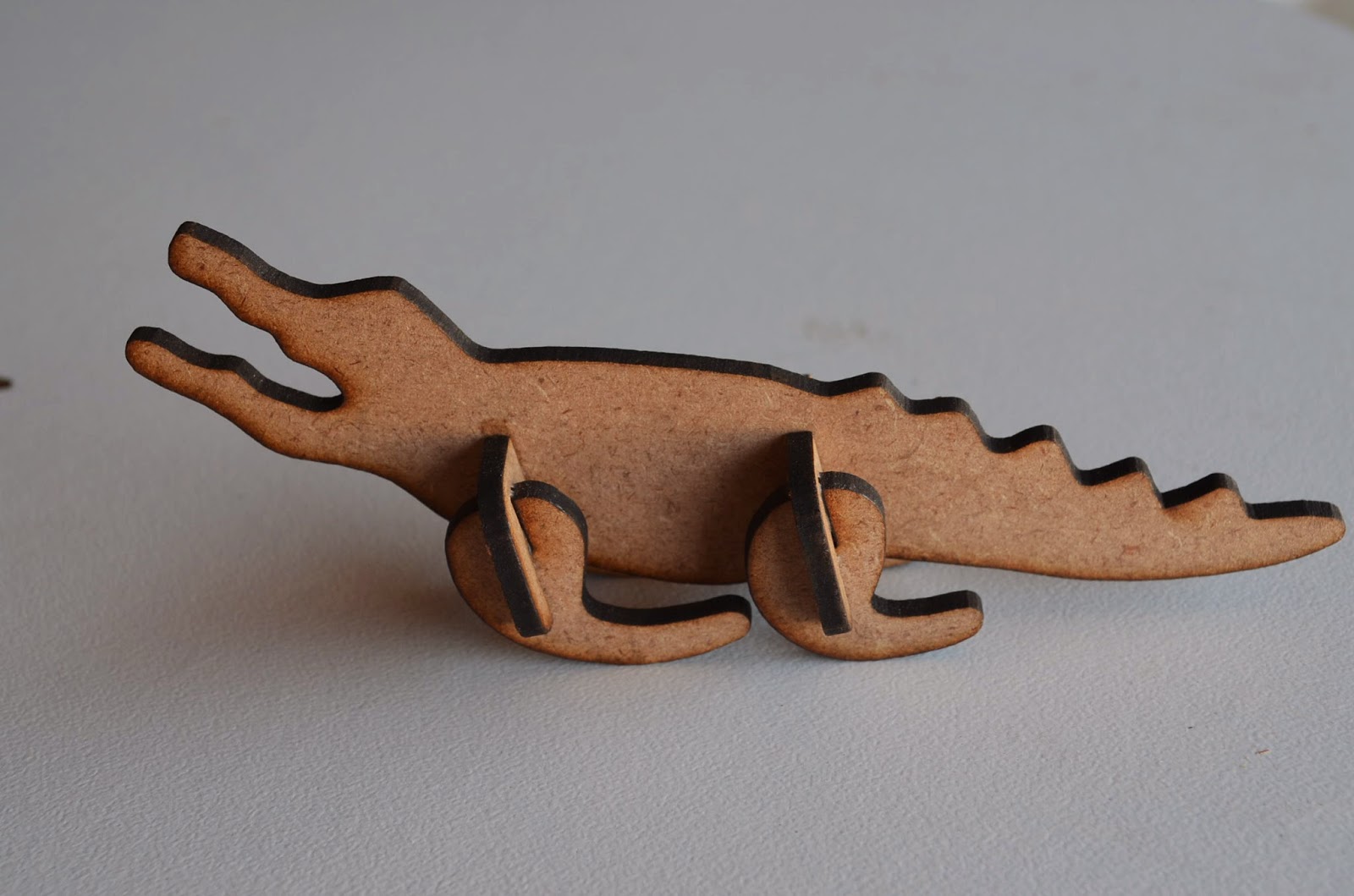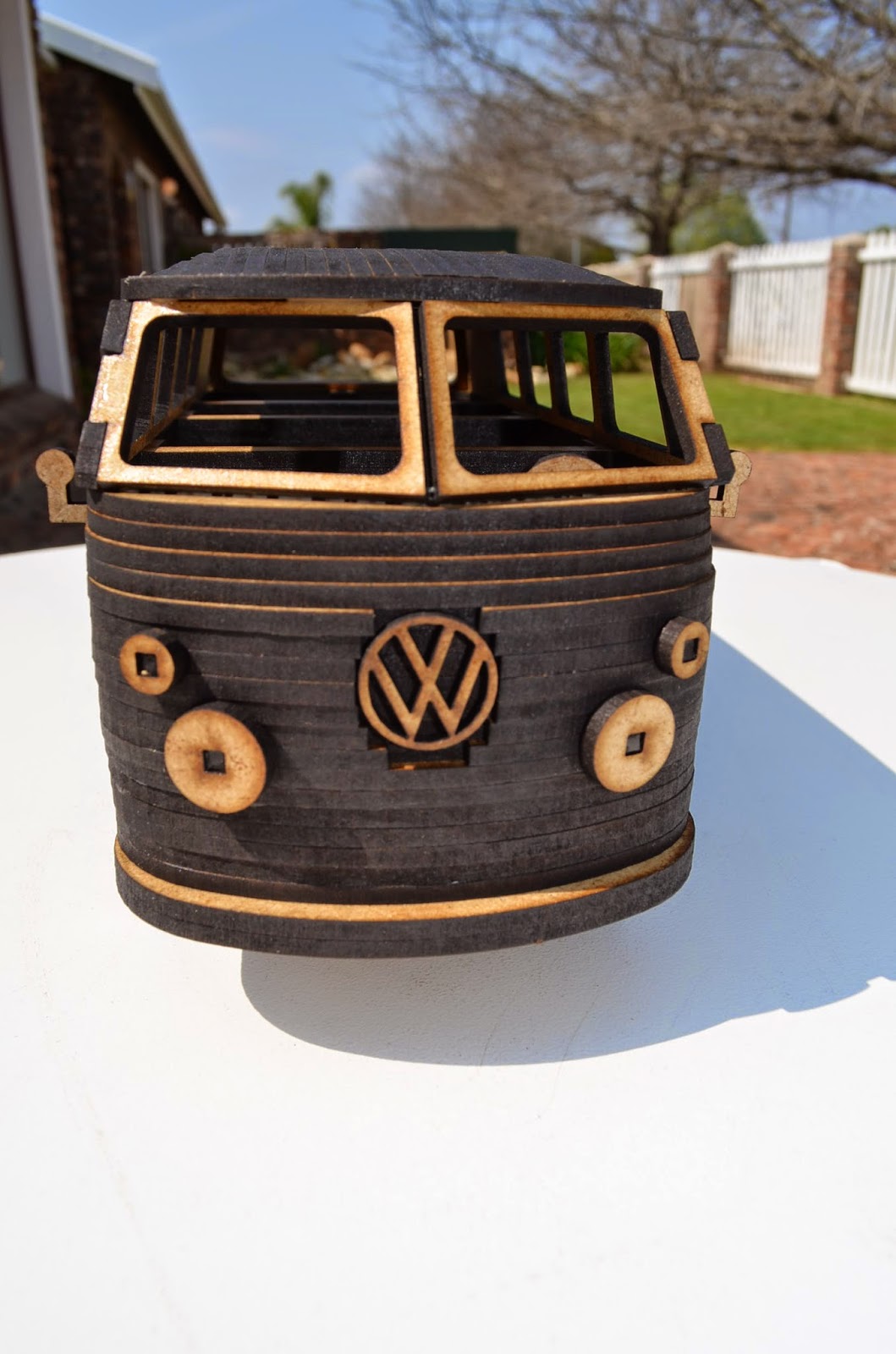DOLLHOUSES BY HERMAN Beautiful detailed 1/16 scale dollhouses made from 3mm supawood. Web: www.dollhousebyherman.co.za
Wednesday, September 17, 2014
Monday, September 15, 2014
3D Puzzles
I Laser a wide variety of puzzles and the following is now in stock.
 |
| Mini Puzzle Gorilla R 15,00 |
 |
| Mini Puzzle Alligator R 15,00 |
 |
| Mini Puzzle Crab R15,00 |
 |
| Mini Puzzle Shark R 15,00 |
 |
| Mini Puzzle Dolphin R 15,00 |
 |
| Mini Puzzle Whale R 20,00 |
 |
| Mini Puzzle Plane R 15,00 |
 |
| Mini Puzzle Fish R 15,00 |
 |
| Mini Puzzle Bull R 15,00 |
 |
| Mini Puzzle Brachiosaurus R 17,00 |
 |
| Mini Puzzle Scooter R 15,00 |
 |
| Mini Puzzle Rabbit R 15,00 |
 |
| Mini Puzzle Seal R 15,00 |
 |
| Mini Puzzle Rhino R 15,00 |
 |
| Mini Puzzle Monkey R 15,00 |
 |
| Mini Puzzle Bear R 15,00 |
 |
| Mini Puzzle Pony R 15,00 |
 |
| Mini Puzzle Elephant R 15,00 |
 |
| Mini Puzzle Lion R 15,00 |
 |
| Mini Puzzle Brontosaurus R 18,00 |
 |
| Mini Puzzle Frog R 15,00 |
 |
| Mini Puzzle Tucan R 15,00 |
 |
| Mini Puzzle Turtle R 15,00 |
 |
| Mini Puzzle Giraffe R 15,00 |
 |
| Mini Puzzle Antelope R 15,00 |
 |
| Mini Puzzle Ant R 15,00 |
 |
| Packaging for all puzzles |
The Tudor Mills House
Tudor mill was built on the site of the former Portland House and the Stamford brewery, next to the Portland Basin on the final section of the Ashton Canal, where it joined the Huddersfield Narrow Canal.
The Minerva Spinning Company Limited was registered in 1891 to build the Minerva Mill at Whitelands. The directors were Messrs Barlow, Marland, Coop, Newton, Pollitt and Pownall; they were later referred to as the Ashton syndicate. The syndicate went on to build the Rock Mill, Curzon Mill, and then, in 1901, the Tudor Mill. It was built with a capital of £70,000. It opened in May 1903 with 250 workers and 85,464. The Tudor Mill Company became part of the Atlas Mills Limited in the 1920s. Further mills built by the syndicate were Cedar Mill and finally the Texas Mill.
The cotton industry peaked in 1912 when it produced 8 billion yards of cloth. The Great War of 1914–1918 halted the supply of raw cotton, and the British government encouraged its colonies to build mills to spin and weave cotton. The war over, Lancashire never regained its markets. The independent mills were struggling. The Bank of England set up the Lancashire Cotton Corporation in 1929 to attempt to rationalise and save the industry. Atlas Mills Limited was taken over by the LCC in 1929. Thus, Tudor Mill was one of 104 mills brought into LCC ownership, and one of the 53 mills that survived through to 1950, though its spindleage had been reduced to 54,104. It closed in the 1960s and was used as a warehouse.It was destroyed by fire on 24 June 1970.
Collect your Wonderful Tudor Mill House Today!
The Minerva Spinning Company Limited was registered in 1891 to build the Minerva Mill at Whitelands. The directors were Messrs Barlow, Marland, Coop, Newton, Pollitt and Pownall; they were later referred to as the Ashton syndicate. The syndicate went on to build the Rock Mill, Curzon Mill, and then, in 1901, the Tudor Mill. It was built with a capital of £70,000. It opened in May 1903 with 250 workers and 85,464. The Tudor Mill Company became part of the Atlas Mills Limited in the 1920s. Further mills built by the syndicate were Cedar Mill and finally the Texas Mill.
The cotton industry peaked in 1912 when it produced 8 billion yards of cloth. The Great War of 1914–1918 halted the supply of raw cotton, and the British government encouraged its colonies to build mills to spin and weave cotton. The war over, Lancashire never regained its markets. The independent mills were struggling. The Bank of England set up the Lancashire Cotton Corporation in 1929 to attempt to rationalise and save the industry. Atlas Mills Limited was taken over by the LCC in 1929. Thus, Tudor Mill was one of 104 mills brought into LCC ownership, and one of the 53 mills that survived through to 1950, though its spindleage had been reduced to 54,104. It closed in the 1960s and was used as a warehouse.It was destroyed by fire on 24 June 1970.
Collect your Wonderful Tudor Mill House Today!
 |
| Front view R 1800,00 |
 |
| Side view |
 |
| Stairs view |
 |
| Back view |
The Fairy Tale Carriage
This pretty sparkly magical carriage is perfect for taking a pretty princess to the ball,pulled by two beautiful horses.
A carriage is a wheeled vehicle for people, usually horse-drawn and sedan chairs are excluded, since they are engine less vehicles. The carriage is especially designed for private passenger use and for comfort or elegance, though some are also used to transport goods.
Carriages normally have suspension using leaf springs, elliptical springs (in the 19th century) or leather strapping. Working vehicles such as the (four-wheeled) wagon and (two-wheeled) cart share important parts of the history of the carriage, as is the fast (two-wheeled) chariot.
The Fantasy Carriage
Fantasy is a genre of fiction that commonly uses magic and other supernatural phenomena as a primary plot element, theme, or setting. Many works within the genre take place in imaginary worlds where magic and magical creatures are common.
A carriage is a wheeled vehicle for people, usually horse-drawn and sedan chairs are excluded, since they are engine less vehicles. The carriage is especially designed for private passenger use and for comfort or elegance, though some are also used to transport goods.
Carriages normally have suspension using leaf springs, elliptical springs (in the 19th century) or leather strapping.
The New Yoker Jeep
The New Yorker Jeep, With its sporty style and classic mag wheels,will be certain to turn heads.This jeep is rugged, durable and can run with the best of them!
The New Yorkers robust suspension offers nimble, confidence-inspiring
handling for your "off-road" adventures.
The Jeep is an automobile marque of Chrysler. The first Willys Jeeps were produced in 1941 with the first civilian models in 1945, making it the oldest off-road vehicle and sport utility vehicle brand. The Jeep has inspired a number of other light utility vehicles, such as the Land Rover which is the second oldest 4-wheel-drive brand. Our New Yorker Jeep is definitely a vehicle you will want to add to your collection today!
The New Yorkers robust suspension offers nimble, confidence-inspiring
handling for your "off-road" adventures.
The Jeep is an automobile marque of Chrysler. The first Willys Jeeps were produced in 1941 with the first civilian models in 1945, making it the oldest off-road vehicle and sport utility vehicle brand. The Jeep has inspired a number of other light utility vehicles, such as the Land Rover which is the second oldest 4-wheel-drive brand. Our New Yorker Jeep is definitely a vehicle you will want to add to your collection today!
 |
| Front view R 250 |
 |
| Side view |
 |
| Back view |
The Volkswagen Beetle
The Volkswagen Beetle, officially called the Volkswagen Type 1, or informally called the Bug, is an economy car produced by the German Automaker Volkswagen from 1938-2003. With over 21 million manufactured in an air-cooled, rear engine, rear-wheel drive configuration, the Bug is the longest-running and most manufactured car of a single design platform anywhere in the world. It was marketed simply as the Volkswagen and was the more comfortable and most powerful of all European small vehicles.
Along with cars including the Morris Minor, Fiat 500, Renault 4CV and Dauphine, the Beetle or Bug pioneered the modern continental economy car and later served as the benchmark for the initial two generations of North American compact cars. The Beetle or Bug has marked a significant trend led by Volkswagen, Fiat and Renault whereby the rear engine, rear-wheel drive layout had increased from 2.6% in 1946 to 26.6% in 1956. The Beetle or Bug featured a rear-located, rear-wheel drive,air-cooled four cylinder, boxer engine in a two-door bodywork featuring a flat front windscreen,accommodating four passengers and providing luggage storage under the front bonnet and behind the rear seat.
The Combi (Flower Power)
The Volkswagen Type 2, is known officially as the Transporter, Kombi and Microbus. It is a Panel Van introduced in 1950 by German Automaker.
Volkswagen as its second car model after they had created Type 1, the VW Beetle, or Bug. The Type 2, or VW Kombi Van, gave rise to forward control competitors in the US in the 1960's, including the Ford Econoline, the DodgeA100 and the Chevie Corvair 95 Corvan
This Kombi Van has received numerous nicknames like the Microbus, Minibus and the Hippie Van. The Type 2, or VW Kombi Van, was among the first "Forward Control" vans in which the driver was placed above the front road wheels. This van also was unique because it was rear engine. This made it advantageous in traction and interior noise. This van was available as a Panel Van which was a delivery van without side windows or rear seats. There were many Type 2's available including the Samba Bus with skylight windows and a cloth sunroof.
Volkswagen as its second car model after they had created Type 1, the VW Beetle, or Bug. The Type 2, or VW Kombi Van, gave rise to forward control competitors in the US in the 1960's, including the Ford Econoline, the DodgeA100 and the Chevie Corvair 95 Corvan
This Kombi Van has received numerous nicknames like the Microbus, Minibus and the Hippie Van. The Type 2, or VW Kombi Van, was among the first "Forward Control" vans in which the driver was placed above the front road wheels. This van also was unique because it was rear engine. This made it advantageous in traction and interior noise. This van was available as a Panel Van which was a delivery van without side windows or rear seats. There were many Type 2's available including the Samba Bus with skylight windows and a cloth sunroof.
Subscribe to:
Posts (Atom)



















